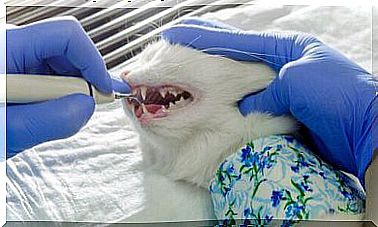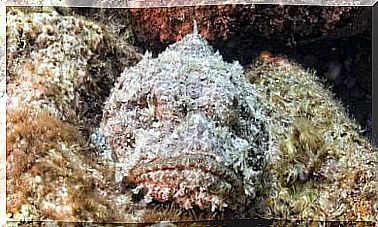Conflicting Behaviors In Cats: Fear, Phobia And Anxiety
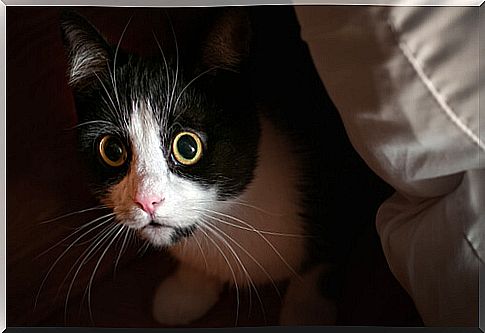
Fear, phobia, anxiety: if you notice that your cat is downcast, hiding or having strange behaviors, such as scratching and biting himself, he is probably going through a problematic moment due to some of these factors. It is important that you are able to identify these behaviors from their first appearances, in order to allow the vet to be able to help your cat in the best possible way. In this article we will talk about these disorders, so that you can identify them and learn how to intervene in these situations.
Fear
Fear is an emotion dominated by the survival instinct that occurs when certain situations, people or things represent a possible external threat, be it real or apparent. The response of the nervous system is automatic and sends the body the information it needs to stay still, attack or flee. Although it is a completely common and fundamental behavior for the adaptation and survival of living beings, it is also true that, depending on the situations in which it occurs, we can speak of normal, abnormal or inappropriate behaviors.
The phobia
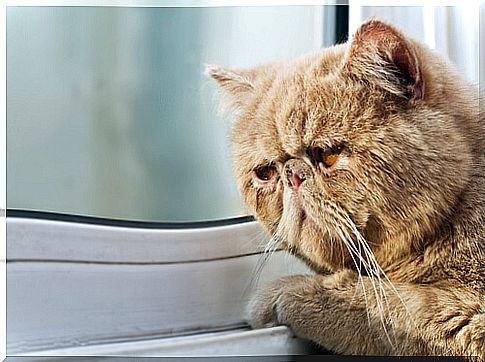
A phobia is a persistent and specific fear of a certain stimulus, such as an electrical storm. An immediate and excessive anxiety attack is what characterizes a phobic condition and it is likely that, once the phobia has manifested, any event that may be associated with it, or with certain memories, is sufficient to trigger an anxious response. The greatest phobias of cats are related to noise, generated for example by thunderstorms or fireworks.
Anxiety
Anxiety in cats is the concern for possible and future problems, caused by unknown or imaginary causes, which manifests itself through different bodily reactions, which are defined as psychological reactions, associated with fear. The most striking behaviors are the evacuation, both of urine and feces, in places that are not usual, the destruction of objects and excessive vocalization. Separation anxiety is the most common specific anxiety among pets: when the animal is alone, it reacts by implementing the conduct we have just mentioned.
Most of the fears, phobias and anxieties that appear in cats develop around 12-36 months of age, which is when the animal’s social maturation begins. A profound form of fear and regression, of unknown origin, can normally appear around 8-10 months of age. A particular form of separation anxiety, also of unknown origin, could be a further manifestation of a cognitive, learning and memory deficit that often affects older cats.
Symptoms
Anxiety and fears: the diagnosis can only be made on the basis of non-specific symptoms for which no identifiable stimulus is present.
Mild fears: Symptoms may include shaking, regression, a tendency to hide and run away, reduced activity.
Panic: Panic symptoms can include active flight behaviors and increased motor activity, both of which are harmful when out of context.
Anxiety: secondary injuries, resulting from anxious behavior (continually licking or biting)
Among the classic symptoms of sympathetic autonomic nervous system activity due to stress, we find some, such as diarrhea, which can be diagnosed as intestinal inflammation or irritable bowel syndrome.
Causes
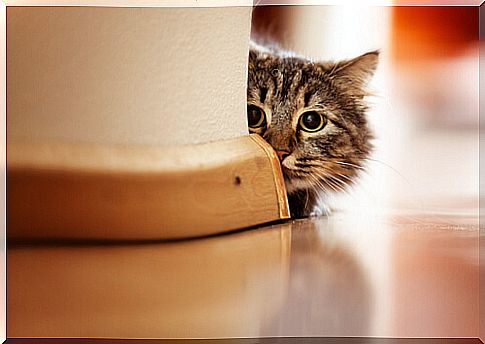
Any painful illness or physical condition increases anxiety and contributes to the development of fears, phobias and anxieties.
The following circumstances can also give rise to behavior problems: changes related to aging, which also involve changes in the nervous system ; infectious diseases (viral infections that mainly affect the central nervous system); toxic conditions, such as lead poisoning.
Fear can come from a traumatic experience: your cat may have been subjected to an unknown and terrifying experience.
Even a prolonged condition of isolation and deprivation of environmental and social contact during the first 14 weeks of life can lead your cat to be very fearful and to be afraid of contact with his surroundings.
Evidently also the fact of not being able to move away or escape from what causes anxiety and panic increases these problems: we are referring to situations of abuse or animals locked up in cages.
Finally, the fearful separation anxiety can be caused by a real history of neglect, an excessive change of owners, a constant change of residence or, more generally, a constant neglect towards the animal. The worst case is when the animal has been abandoned or given to another owner precisely because of its separation anxiety.
Diagnosis
Contact a veterinarian who will first try to rule out any other factors that may be causing your cat’s behavior problems, such as a brain deficit or thyroid disorder. Furthermore, the animal’s behavior could manifest itself in response to a toxic substance, such as lead, which can cause neurological disorders. Blood tests will be useful in this case to confirm or rule out such hypotheses.
If your vet diagnoses mild fear, anxiety or phobia, it may well be that all can be solved by prescribing some medications. However, he will give you specific advice based on what really affects your cat’s state of mind and health, what triggers his fears and how to alleviate his fears and anxieties through a series of operative conditioning.

